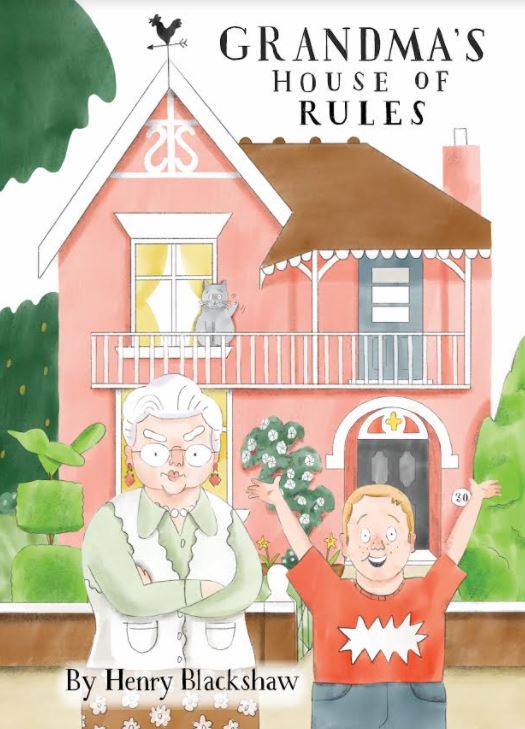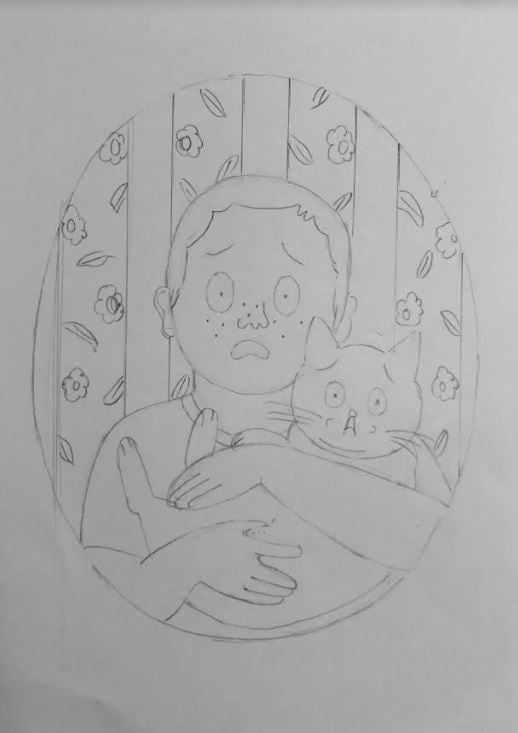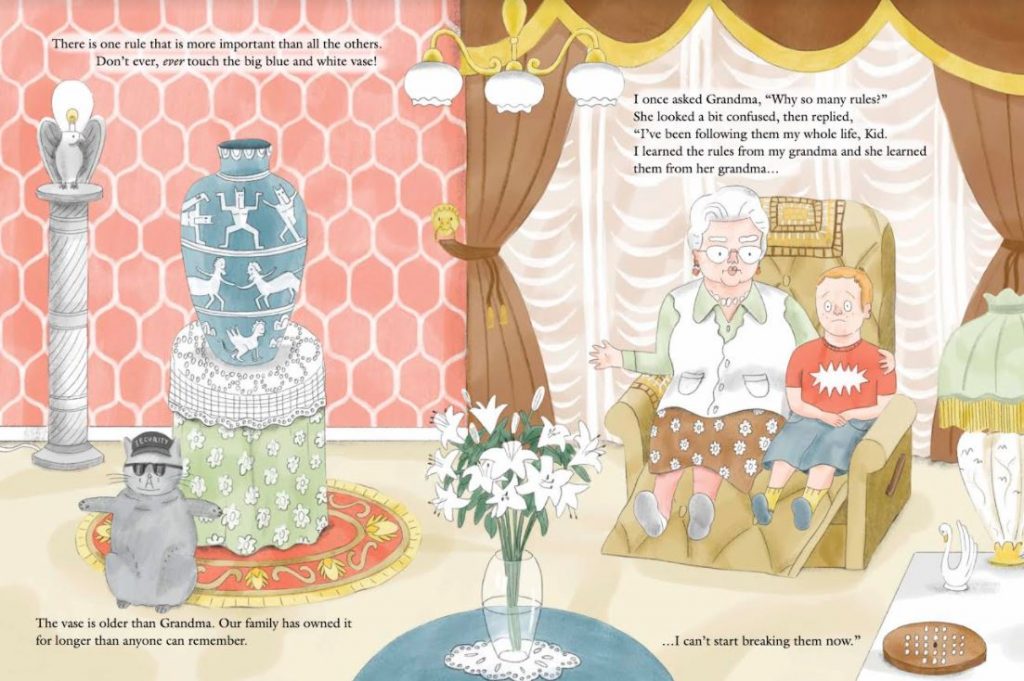Today we welcome Henry Blackshaw into The Reading Realm to talk about the inspiration behind his new book, Grandma’s House of Rules, which is published by Cicada.

When I look at the list of ideas for kids books that I keep on my phone, right at the top are the words “House of Rules”. I’d always wanted to write a book about the funny rules that families have, and I knew that my own experiences would provide rich pickings.

I grew up in a kind and loving environment, but one where there was always a “right” way of doing things. A combination of my parents’ personalities and the family traditions they embodied, created a rich and finely balanced landscape of family rules. From how to lay the table, and how to clean the place mats, to what cutlery wasn’t allowed in the dishwasher and which chairs were too precious to sit on. It was these rules, and the idea that they could make perfect sense in one environment, yet be so ridiculous at the same time, that would become the basis of my story. Many of them have made it into the final book.

But turning a list of family rules into a full-blown story with a satisfying plot proved tricky. I always think of writing a children’s book as a bit like like writing a really good joke. It has to be short, every word counts, and there needs to be a surprise at the end which is both unexpected and satisfying. The solution I found was to think of the book in terms of a traditional comedy. In comedies the protagonist gets more and more into a mess the more they try to get out of it. And the idea of someone breaking the rules the more they try to stick to them would become a key driver of my story.

There was another important tributary which fed into Grandma’s House of Rules. In 2017 I wrote and illustrated a zine for children called “Help! I Broke It”. It was a simple story (only 56 words) about a boy who breaks his Grandma’s vase. What made the zine work was that it drew upon that awful feeling of having to confess to breaking something that doesn’t belong to you. I remember playing dares as a child, and the worst dare was to lie to the adults that we had broken something precious (in our case a new and expensive fibreglass thermos). This tension would become an important part of Grandma’s House.
In terms of the illustrations I wanted to capture a “Nan flat”, that typical grandparent household which feels simultaneously stuffy and cosy. I had a lot of fun mining memories of my own childhood and visits to see my Nan. Things like how the cuddly toys at Nan’s would always smell of cigarettes. There’s a monkey puzzle tree on the first page that I remember walking past on the way to school, and the cast iron garden furniture on the back cover is still in my aunt and uncle’s garden.
Lastly, there will be a lot of people that know me who will suspect that Grandma’s House of Rules is not just about my childhood but about who I am as a person. As someone who when told a rule then struggles to ever break it, the message of applying rules lightly is a reminder to myself as much to all my readers.

